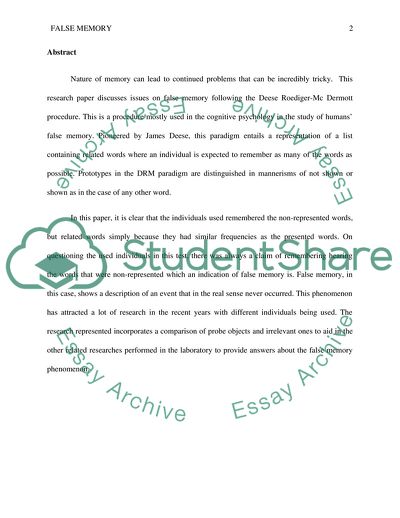Cite this document
(Lab Report on false memory Essay Example | Topics and Well Written Essays - 2000 words - 1, n.d.)
Lab Report on false memory Essay Example | Topics and Well Written Essays - 2000 words - 1. Retrieved from https://studentshare.org/psychology/1787519-lab-report-on-false-memory
Lab Report on false memory Essay Example | Topics and Well Written Essays - 2000 words - 1. Retrieved from https://studentshare.org/psychology/1787519-lab-report-on-false-memory
(Lab Report on False Memory Essay Example | Topics and Well Written Essays - 2000 Words - 1)
Lab Report on False Memory Essay Example | Topics and Well Written Essays - 2000 Words - 1. https://studentshare.org/psychology/1787519-lab-report-on-false-memory.
Lab Report on False Memory Essay Example | Topics and Well Written Essays - 2000 Words - 1. https://studentshare.org/psychology/1787519-lab-report-on-false-memory.
“Lab Report on False Memory Essay Example | Topics and Well Written Essays - 2000 Words - 1”. https://studentshare.org/psychology/1787519-lab-report-on-false-memory.


